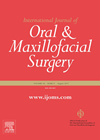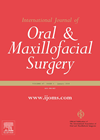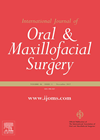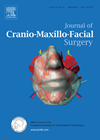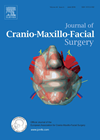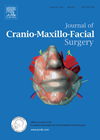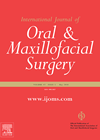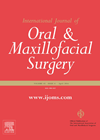
Journal Reviews
CT parameters in orbital wall fractures, choice of treatment, and patient outcome
This review from the Netherlands attempts to evaluate the relationship between CT parameters and the treatment that is used in clinical outcome (enophthalmos, diplopia and/or limitation in ocular movement). The authors look at fracture size, fracture location and involvement of...
Locked or unlocked?
This systematic review and meta-analysis from the Netherlands evaluates postoperative complications of mandibular fractures using locking and non-locking systems. It is suggested that postoperative complications of surgical treatment of mandibular fractures occur in 20-26% of patients, and it is thought...
Do bicycle helmets prevent facial injuries?
This is an analysis from Germany where they reviewed over 7000 bicycle accidents over a 16-year period that met their inclusion criteria. Over 1000 had a facial injury (bone or soft tissue) with helmets being worn in 11.8% of accidents....
Cycle helmets protective against facial injuries?
This is a meta-analysis completed by a maxillofacial unit on the South Coast of England. Nine studies from an initial literature review of 102 were included in the analysis. Cycling has been reported as the cause of 3-20% of facial...
When to treat a fractured mandible?
This is a prospective study from Brisbane of 215 patients with a total of 359 fractures of the mandible. Nine outcome variables were analysed with a further 19 included to adjust for potential confounding. Treatment delay was found not to...
Approach to the orbital floor: which is better?
During skeletal surgery sufficient exposure is key – often a direct approach through the overlying tissues is the easiest route. In the face, however, as the scar would be readily visible, approaches are designed to hide this. Surgical access to...
Inferior alveolar nerve recovery after ORIF fractured mandible
Mandibular fractures are quite common facial injuries, but aetiology varies with country and age. Common treatment options are open reduction and internal fixation via an intra-oral or extra-oral incision. Nerve injury or dysfunction is often seen preoperatively and may also...
Is it possible to fix condylar neck fractures with one plate?
Fractures of the condylar neck are fairly common and account for over 25% of all mandible fractures. Over the years a number of modalities have been used to fix these fractures. Direct reduction is complicated by the overlying proximity of...
Bad splits
This is a meta-analysis of reported risk factors of a ‘bad split’ in a sagittal split mandibular osteotomy. They identified 30 observational articles and therefore acknowledged it is based on low quality studies. It is compounded by the definition of...
Mirror image orbital implants in enopthalmus
This is a review from Chile of five patients who underwent surgery utilising customised implants. Two methods to make the titanium implants were used between the five patients. All patients had diplopia in the gaze position prior to implant placement....
What can the anterior cranial fossa fracture pattern tell us?
This assessment involves 81 patients treated between two regional major trauma centres in the UK. Fifty sustained a predominantly anterior directed force and 31 a lateral impact. They found that anterior impacts reduce the incidence of fracture propagated beyond the...

